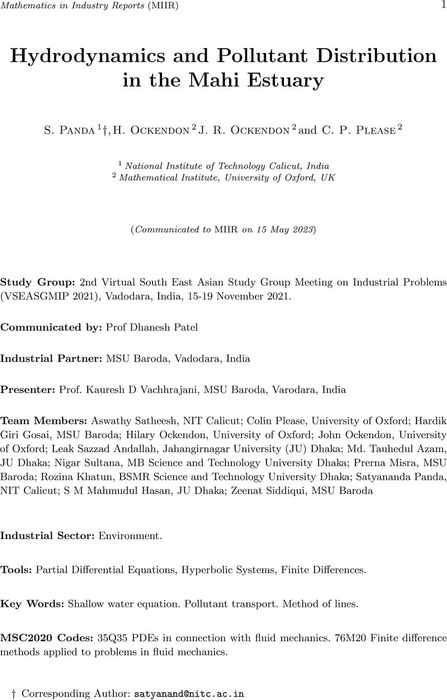Abstract
It has been observed that pollutants mainly cause pollution in the Narmada river and the estuary, which is driven there during high and low tides. The modelling presented here concentrates on phenomena affecting the distribution of pollutants in the Gulf of Khambhat and the Estuaries. The model used for the tidal water movement in the Gulf is the shallow water equations with turbulent friction. A simplified linearised version of these equations is used in two idealised geometries to explore why the tidal amplitude and velocity can increase so significantly up the Gulf, and both resonance effects and the rapid narrowing of the Gulf are identified as being contributors. The wave elevation and velocity are described by a coupled system of partial differential equations that are spatially discretized and solved using an ODE solver.
Content



![Author ORCID: We display the ORCID iD icon alongside authors names on our website to acknowledge that the ORCiD has been authenticated when entered by the user. To view the users ORCiD record click the icon. [opens in a new tab]](https://www.cambridge.org/engage/assets/public/miir/logo/orcid.png)



